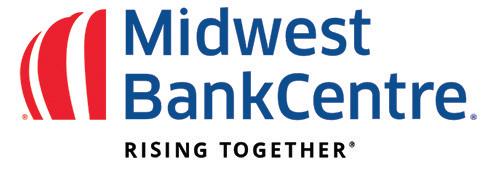




Debt consolidation involves combining multiple debts into a single account to reduce the number of bills you pay each month. Ideally, you also lower the overall interest rate and can ultimately pay off the debt more quickly.
When choosing the right lender for you and your needs, consider the type of loan, interest rates, fees and repayment options, among other features.
When it comes to consolidating debt, these are the most common types of loans you’ll encounter:
Many lenders offer personal loans designed to help you pay off debt faster and save on interest. These loans, often called debt consolidation loans, come with a fixed interest rate and repayment term.The idea is to pay off your outstanding debt with the loan and then make a single payment each month.
Also known as balance transfer credit cards, these cards offer an interest-free introductory period, typically ranging from 12 to 18 months. They are generally reserved for consumers with good or excellent credit. Only consider this option if you can pay off the new card during the introductory period. You’ll face typical credit card rates after.
You can convert up to 85% of your property’s equity into cash and use it to consolidate debt with a home equity loan. It acts as a second mortgage with a five-year repayment period of five to 30 years. The interest rate is also fixed and lower than most credit cards. The major drawback is that your
home acts as collateral. You could lose your property if you fall behind on the loan payments.
A HELOC is like a home equity loan — but you won’t receive the loan proceeds in a lump sum. They work more like a credit card. You can pull from funds as needed, up to a set limit, during the draw period. Interestonly payments are required during the draw period on most HELOCs. Once it ends, you’ll repay in monthly installments over a term of 10 to 20 years.
As with all financial products, your credit score is important in determining if you qualify. Pay attention to each lender’s credit score requirements. Lenders also set a maximum debt-to-income (DTI) ratio
Both factors will allow you to select lenders that work with borrowers with your credit profile. This could save you time. You won’t be applying to lenders who are highly unlikely to approve you.
Before choosing a debt consolidation lender, you must determine how much debt you must consolidate. Check your debt balances and request payoff amounts, which will be slightly higher than your current balance. Once you have this number for each debt you want to consolidate, you can look for a new lender.
Lenders cap the amount you can borrow. Make sure to check the max beforehand so you can consolidate all of your accounts with a single new one.
In a move to confront racial disparities in credit terms, the Biden administration has unveiled a proposal to cap credit card late fees at $8, challenging the longstanding issue of “junk fees” that disproportionately affect people of color and minorities.
The plan aims not only to alleviate immediate financial burdens for consumers but also addresses the systemic inequities faced by those residing in predominantly Black or African American and Hispanic or Latino communities.
Recent studies have shed light on the stark differences in credit terms, revealing that cardholders in these minority-majority neighborhoods face lower credit limits and higher interest rates than their counterparts in predominantly white areas, even considering factors like credit scores and income.
One analysis of a diverse sample of cardholders uncovered troubling trends, including credit limits for those in majority Black and Hispanic zip codes, which were, on average, $3,412 and $4,285 lower, respectively. Also, interest rates for individuals in these zip codes were, on average, approximately 1.3 and 1.4 percentage points higher, respectively.
Beyond the immediate financial relief for consumers, the White House said the proposed regulation aligns with the broader mission of the Biden administration to dismantle systemic economic disparities. By reducing excessive fees, particularly those impacting people of color, the administration aims to create a more level playing field and alleviate the financial burdens marginalized communities face.
The disparities in credit terms impact the upfront costs of credit and have broader implications. Individuals in the majority Black and Hispanic zip codes often carry their credit card balances for extended periods, leading to higher overall costs. Lower credit limits can also result in elevated credit utilization rates, potentially contributing to lower credit scores.
Biden announced that his administration is forming a new “strike force” to combat illegal and unfair pricing across

various sectors, including groceries, prescription drugs, health care, housing, and financial services. Officials said the multifaceted approach underscores the administration’s commitment to dismantling systemic barriers and promoting financial inclusivity.
While the proposal is expected to save
Americans up to $10 billion annually, the White House said its potential impact on racial and economic disparities signifies a critical step towards building a more just and equitable financial system.
“Credit card companies collect billions of dollars in excessive late fees at the expense of economically vulnerable fam-
ilies every year,” Chuck Bell, advocacy program director at Consumer Reports, said in a statement. “It’s simply unfair to impose a steep late fee penalty that far exceeds the credit card company’s costs, especially when someone is just a few hours or a couple of days late making their payment.”
St. Louis American
Time is running out if you want to qualify for a $5,000 signing bonus to join the Metro Transit team as a mechanic or transit operator, especially a Metro Call-A-Ride operator. The special $5,000 signing bonus that was established last year, has been extended through Saturday, April 13.
That’s because the monthly Metro Transit hiring event will take place
this Saturday, April 13, from 10 a.m. to 2 p.m. at the North County Transit Center in Ferguson, Missouri. Experienced mechanics and individuals interested in becoming Metro Call-A-Ride operators, MetroBus operators and MetroLink operators will be interviewed at this event.
Qualified attendees will leave the event Saturday with on-the-spot job offers.
Metro is committed to improving Call-A-Ride service for customers with disabilities and hiring more Call-A-Ride operators is necessary to reach that goal.
The North County Transit Center is located at 3140 Pershall Road in North St. Louis County, just off of Interstate 270 between West Florissant and New Halls
Ferry Road. Benefits
• Work for a company that strives to make a positive impact in the region.
• Earn competitive wages.
• Gym discounts with Club Fitness and OneLife Fitness at Ballpark Village.
• 24-hour access to our 8 onsite gyms.
• Wellness program that provides free health screenings.
• Discounted cell phone service.
• Free MetroLink and MetroBus access.
• Medical, dental, vision coverage.
• Your birthday is a floating holiday.
• Uniform allowance.
• Employee assistance program.
• Bi-State Development is an eligible employer the for Public Service Student Loan Forgiveness program.
Interested individuals are encouraged to learn more about the Metro Transit operator and mechanic positions online and are encouraged to apply before Saturday’s hiring event to speed up the on-site application process on Saturday. Visit www.metrostlouis.org/careers/ to apply online.
Bi-State Development operates the Metro Transit system in the City of St. Louis and in St. Louis County in Missouri and in St. Clair County in Illinois.

“How do we leverage our balance sheet in a way that it actually accrues to the benefit of the community and still meets our business needs?” This was the critical question that leadership at BJC Healthcare asked in 2021 when evaluating how to address health disparities in their service area, leading to their depository relationship with Midwest BankCentre.
Recently, at the national conference for the Society of Public Health Educators held in downtown St. Louis, I had the privilege to share insights on a panel exploring the vital collaboration between financial institutions and public health organizations. The focus was on leveraging these partnerships to positively impact social determinants to health. My message, consistent with my long-standing belief, centered on financial well-being through Shared Prosperity as a crucial factor in improving health outcomes for communities adversely affected by their environment.
The concept of financial well-being has evolved for me over time. I view it as the culmination of three elements: human capital—our formal and informal education; social capital—the depth, breadth, and quality of our networks or relationships; and financial capital—our earnings, ownership, or borrowing capacity to build wealth. Financial well-being is about bringing stability and peace of mind into our homes. Shared Prosperity takes this concept further by ensuring that our investments equip people from all walks of life, representing the diversity of our region, to secure and advance in well-paying jobs without exclusion.
Shared Prosperity also emphasizes providing broader access to business opportunities, encouraging a more diverse group of owners and fostering ownership across various sectors. It’s about seeing the value in investing in the region’s infrastructure, making cities like St. Louis not just livable but desirable places for jobs and investment. Prioritizing racially

and economically diverse neighborhoods is essential for creating sustainable communities that contribute to a stronger and more inclusive St. Louis.
The path to Shared Prosperity involves uniting the region in a collective effort to excel. Every individual and organization contributes according to their strengths. A critical aspect of this journey is our continued investment in the foundational elements of prosperous communities: cultural institutions, human services, arts, parks, and educational facilities. By channeling resources through tax dollars, private philanthropy, and business investments into these areas, we not only sustain but enrich the cultural and educational landscape that forms the backbone of our region.
However, there is a compelling need to broaden our investment philosophy, particularly towards transformative projects like the Brickline Greenway orchestrated by Great Rivers Greenway (GRG). It
exemplifies a trifecta for the region as a beacon of Shared Prosperity. This project is transformative at its core, aiming to mitigate housing disparities, catalyze asset growth, and bolster population retention. By facilitating job creation and enhancing connectivity, the Brickline Greenway stands as a testament to how intentional investments in our physical spaces can spur community-wide upliftment. In parts of our region, like North St. Louis, economic initiatives like this can significantly enhance the financial well-being of the community.
Moreover, attracting companies specializing in areas such as advanced manufacturing, technology, financial services and beyond and creating a welcoming environment for startups are pivotal steps towards economic growth. These efforts, combined with strategies to grow the population with a diversified skill set, are essential for addressing challenges related to funding amenities and providing a workforce for new and existing businesses. Organizations like the International Institute play a significant role in helping

St. Louis attract a fair share of the growing Hispanic and other diverse markets, showcasing the importance of inclusivity in population growth strategies.
As we strive to enhance business productivity and population growth, ensuring that individuals earn a comfortable wage is imperative. A reasonable wage supports consumer spending on homes, cars, and other essentials, which, in turn, drives economic growth. Given that consumer spending accounts for approximately 70% of the U.S. GDP, the ability of individuals to earn sufficiently is a cornerstone of economic prosperity.
Shared Prosperity is not just an economic imperative; it’s a public health necessity. By focusing on financial well-being, we can address many social determinants to health, improving life outcomes across communities irrespective of race. This approach requires a collective effort, a commitment to equity, and an understanding of the interconnectedness of our economic systems and public health.
In conclusion, the path to Shared Prosperity and its significance in uplifting an entire region transcends racial and economic boundaries. It’s about creating a sustainable ecosystem where everyone has the opportunity to thrive. By investing in people, infrastructure, and institutions, and by fostering an environment that encourages economic diversity and innovation, we can achieve a healthier, more prosperous future for all. The discussions at the national conference in St. Louis serve as a reminder of the powerful impact financial institutions and public health organizations can have when they work together towards Shared Prosperity. It’s a goal that demands our collective action and unwavering dedication.
It Matters Where You Bank.
Car insurance is one of the costliest purchases that consumers hope to never use. While it›s always important to buy the right coverage, it costs a lot more to insure a brand-new car than a five-, seven-, or nine-year-old model you are replacing. Here are five helpful tips on how to keep your premiums in line without taking on unnecessary risks.
It’s easy to compare multiple insurers online, at sites such as Answer Financial, Insure.com, Insweb.com, and NetQuote. You usually won’t get an immediate quote online, but you will get email messages from agents looking for your business. Consider forming a relationship with an independent agent, who will check rates for you at a range of carriers.
Saving money isn›t simply a matter of finding the lowest premium. Some insurers have lower premiums, but end up costing you more in the end by lowballing loss estimates, hassling the repair shop to cut corners, and forcing you to pay extra for original-equipment replacement parts. They might even unfairly jack up your premiums after an accident.
In a survey of 64,872
ConsumerReports.org subscribers who filed a claim between 2011 and 2014, 88% of them were highly satisfied with the handling of their claims. Among the highest-rated groups were USAA, Amica, and NJM, with overall satisfaction scores of 90 or higher.
A higher deductible reduces your premium because you pay more out of pocket if you have a claim. Hiking your

deductible from $200 to $500 can cut your premium on collision by 15 to 30 percent. Go to $1,000 and you could save 40%. If you have a good driving record and haven’t had an at-fault accident in years, if ever, opting for a higher deductible on collision might be a good bet. Just make sure you can afford to pay that cost if your luck runs out.
Car insurers offer a whole range of modest but worthwhile discounts that are essentially based on a low-risk lifestyle. Here are some to ask your insurer about if they don’t mention them to you first:
• Students with good grades.
• New drivers who have taken a driver-training course.
• Older drivers who have taken a refresher course.
• Any driver who takes a defen-
sive-driving course.
• Members of affinity groups, such as college alumni and certain occupations and professions.
Insurers also offer fairly hefty auto discounts if you also buy your homeowners, renters, or life-insurance policy from them. But be sure you check out total costs both ways: premiums from different insurers compared with single-insurer packages.
A major cost component in auto insurance is miles driven per year. The average is about 12,000. But if you’re driving a lot less than usual for some reason, like a job change or retirement, let your insurer know. Your reduced driving could cut 5 to 10 percent off your premiums.

Continued from D2
Even if a lender has a low starting rate, it will be reserved for those with excellent credit. Instead, check the maximum annual percentage rate (APR) a lender charges to be sure a loan will still be affordable even if you don’t qualify for the lowest rates.
For a sense of what interest rate you might get, make sure you prequalify with multiple lenders you think will best suit your needs. Prequalifying will allow you to see your eligibility without damaging your credit.
Almost every lender will charge a fee to borrow. These often include late fees, origination fees or prepayment penalties. However, some lenders do not charge any fees. If you have good to excellent credit, you may be able to qualify with one of these.



